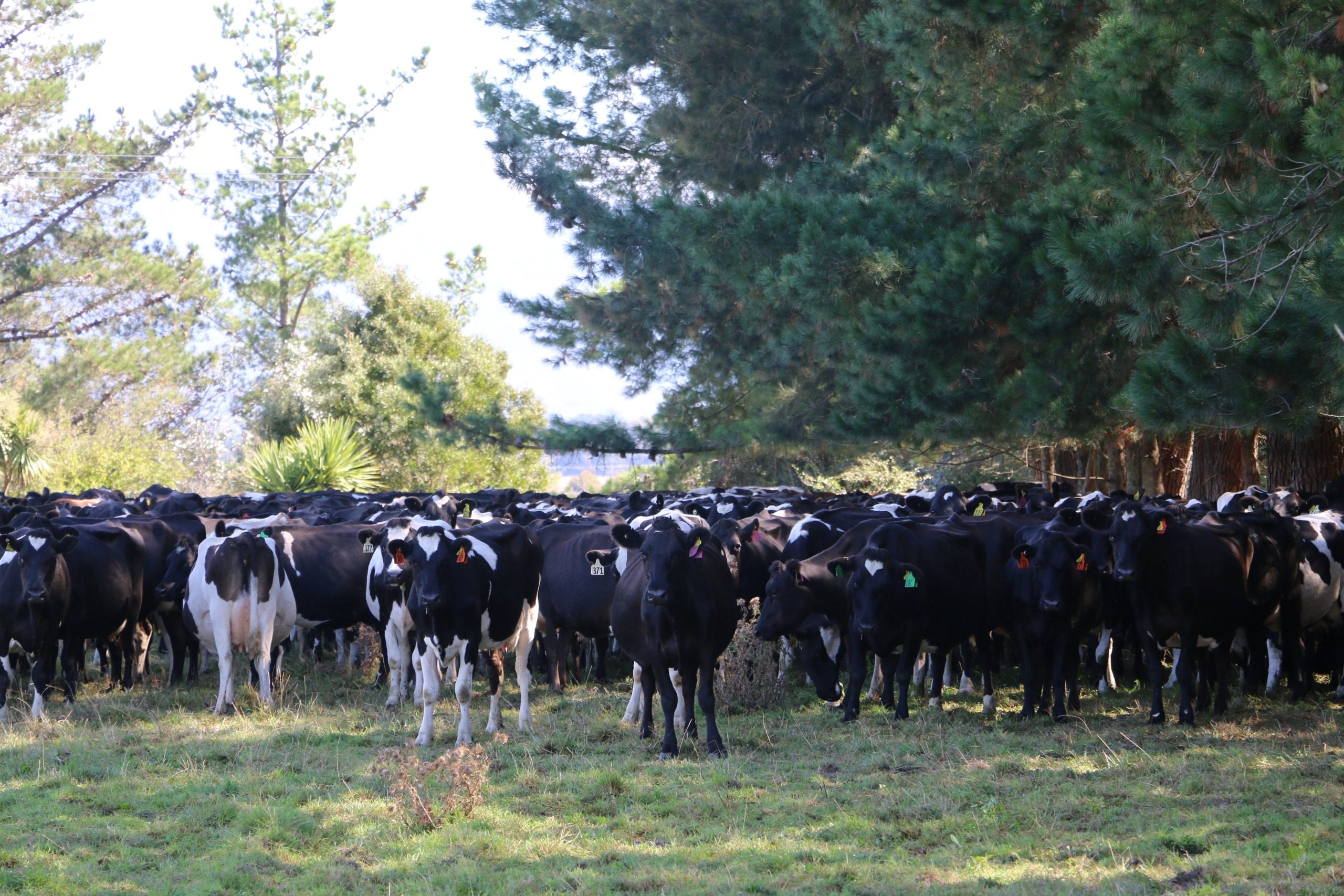Coping with the heat
Heat stress in cows is an increasingly worrying phenomenon, due to changing weather patterns. Vet Katie Mason shares how to best cope with the heat.

We have had unseasonably warm weather in the last few weeks and this has had implications for grass growth and production. Heat stress in dairy cows counteracts the tremendous genetic gains we have made in milk production, by limiting feed intakes and subsequently reducing production potential.
It is thought heat-stressed cows stop eating to reduce the heat produced by rumen fermentation, limiting production potential and they also don’t perform as well reproductively.
In hot, dry weather the grass dries out and the fibre content of pasture increases.
This can be problematic as poor-quality grass is less-easily digested and can increase the heat from rumen fermentation, which can exacerbate already hot environmental conditions.
We know heat-stressed cows don’t eat as much and therefore don’t produce as much; but there are other biochemical and physiological factors which play a role in reducing the production, which we are less well understood.
When cows are too hot they rely on mechanisms of evaporative cooling such as sweating and panting, although they are less-efficient at losing body heat through sweating than humans.
There is a combined measure of temperature and humidity known as the temperature humidity index (THI). Heat stress usually occurs at temperatures over 23C and humidity over 80%. For every unit increase in THI cows produce on average 10g fewer milksolids per day. In real terms, the thermal neutral zone (the temperatures between which dairy cows can normally regulate their temperature easily) is -5C and 25C at moderate humidity.
Friesian cows seem more susceptible to heat stress than other breeds so any more than 21C and relative humidity of 75% is problematic. For Jersey cows, the temperature is 25.5C at 75% before there is a noticeable drop in milk fat/protein percentages and total milksolids.
Higher-production cows are also more susceptible to heat stress. These animals have a higher basal metabolic rate and are therefore more likely to suffer the effects of heat.
What do heat-stressed cows look like?
Mild heat stress can result in a simple increase in sweating and breathing rate.
• Animals suffering the effects of heat will often seek shade.
• Cows will often crowd together, particularly around the water trough.
• The cows’ water intake can increase by as much as 30% in hot weather.
• Heat-stressed cows will have noticeably reduced feed intakes (10-30%) and will have reduced milk production (as much as 20%).
• In severe heat stress, cows often extend their heads and protrude their tongues exhibiting signs of drooling or panting.
Reducing the risk of heat stress
• Constant access to cool, clean water is paramount – back-fencing with no access to a trough is NOT acceptable – use portable water troughs if necessary. High-production cows can drink in excess of 100 litres a day, increasing to 120-130l in dry, hot weather. Cows will drink between two and six times a day.
• Consider providing water in high traffic areas like the exit race, as some researchers have observed cows drink most immediately after milking.
• Keep cows out of direct sunlight where possible. Use paddocks with shade trees if possible and provide shelter at the shed if you can. Reduce time spent standing in the yards and reduce time spent walking.
• Providing shelter is important to keep the cows comfortable and shaded. If you have a winter herd shelter to keep cows warm and dry in the winter, these can be useful to provide shade in the summer if suitably ventilated (otherwise it can be 10C warmer inside than out).
• As feed quality is declining, consider supplementary feed if it is necessary and reduce stock numbers if possible.
• Cull surplus and empty cows as early as possible to reduce demands on pasture, especially if your ability to buy in quality feed is limited.
• Consider a later afternoon milking time and try to avoid working in the heat of the day for your sake and the cows’.
• Keep handling stresses to a minimum, especially during the hottest part of the day.
• Sprinklers can be useful in the yard, but these are best used in combination with a fan system to reduce the humidity level and allow evaporation from the cows.
A final word on the heat: remember that some rain following prolonged periods where nigh time temperatures exceed 12C is prime risk time for facial eczema spores so you may like to consider preventative zine supplementation earlier this season. Discuss this with your vet.




